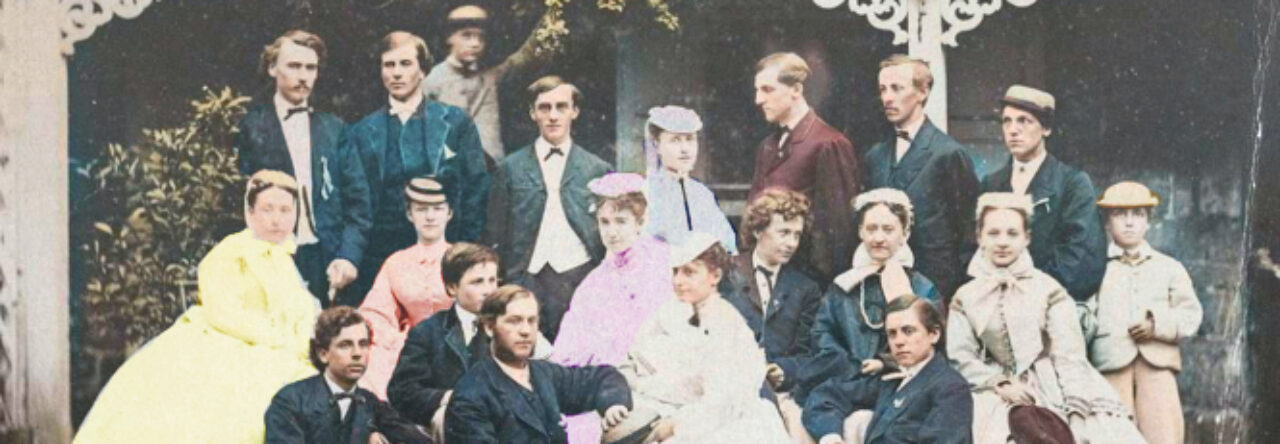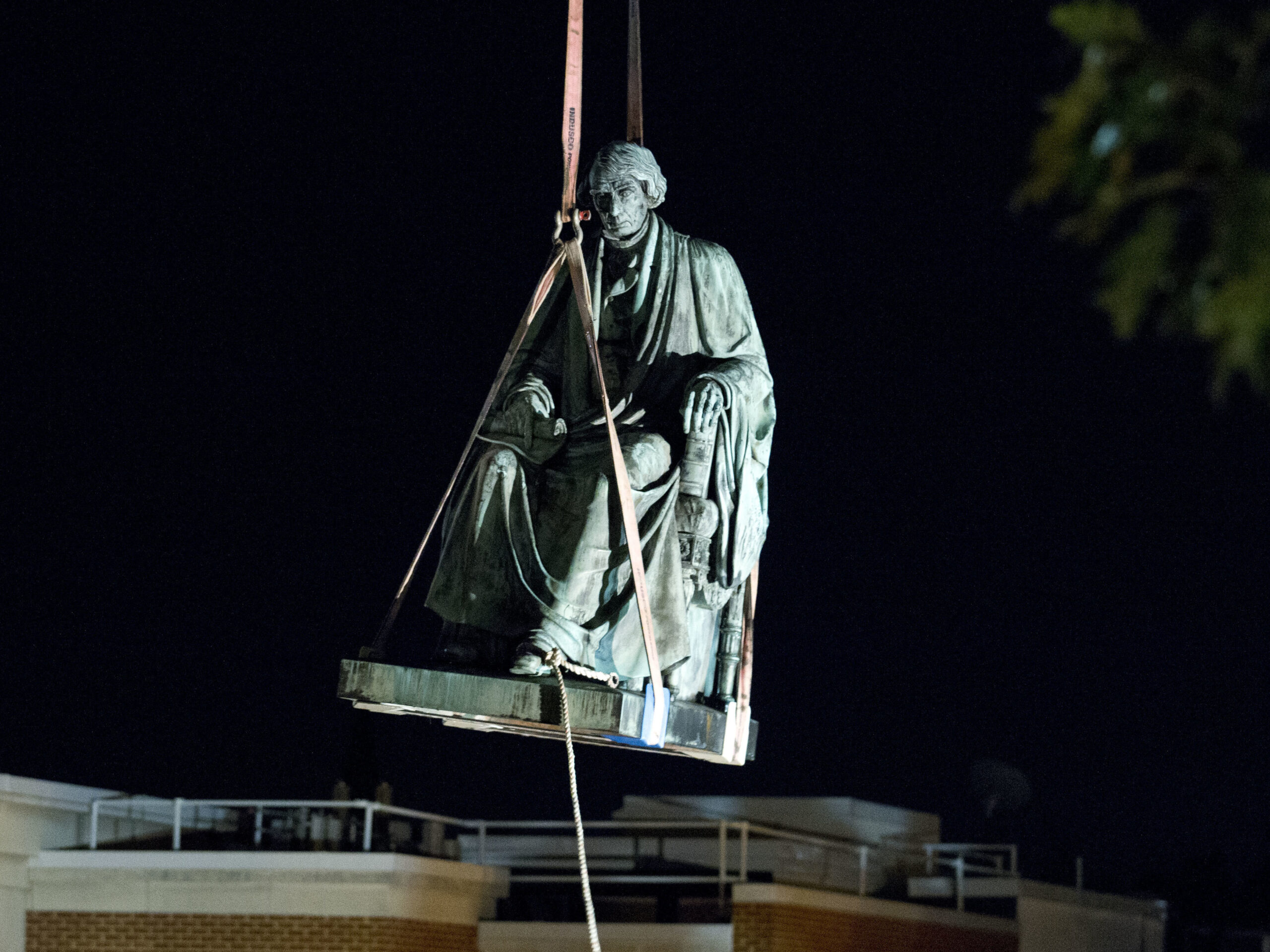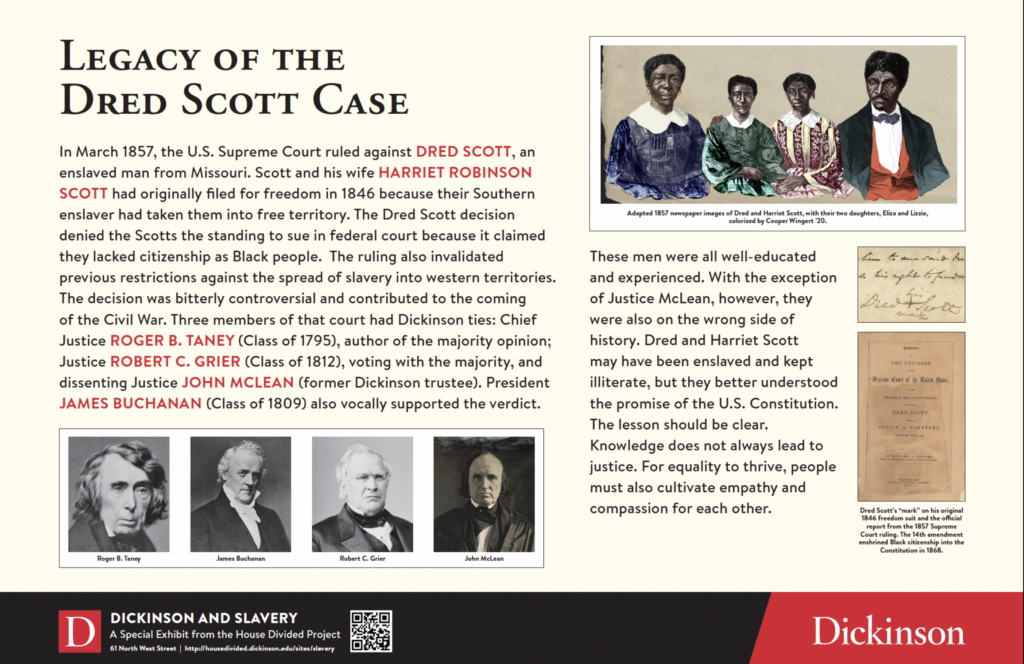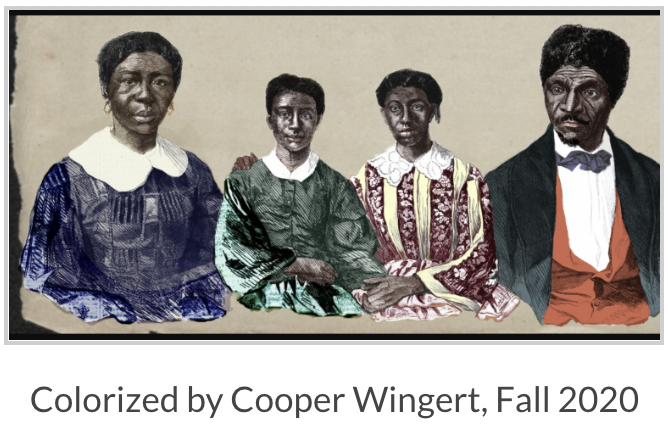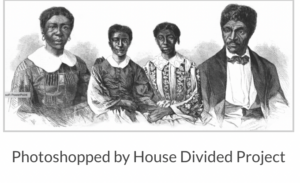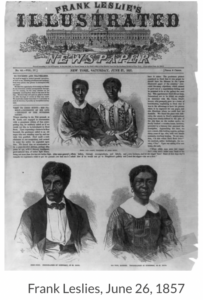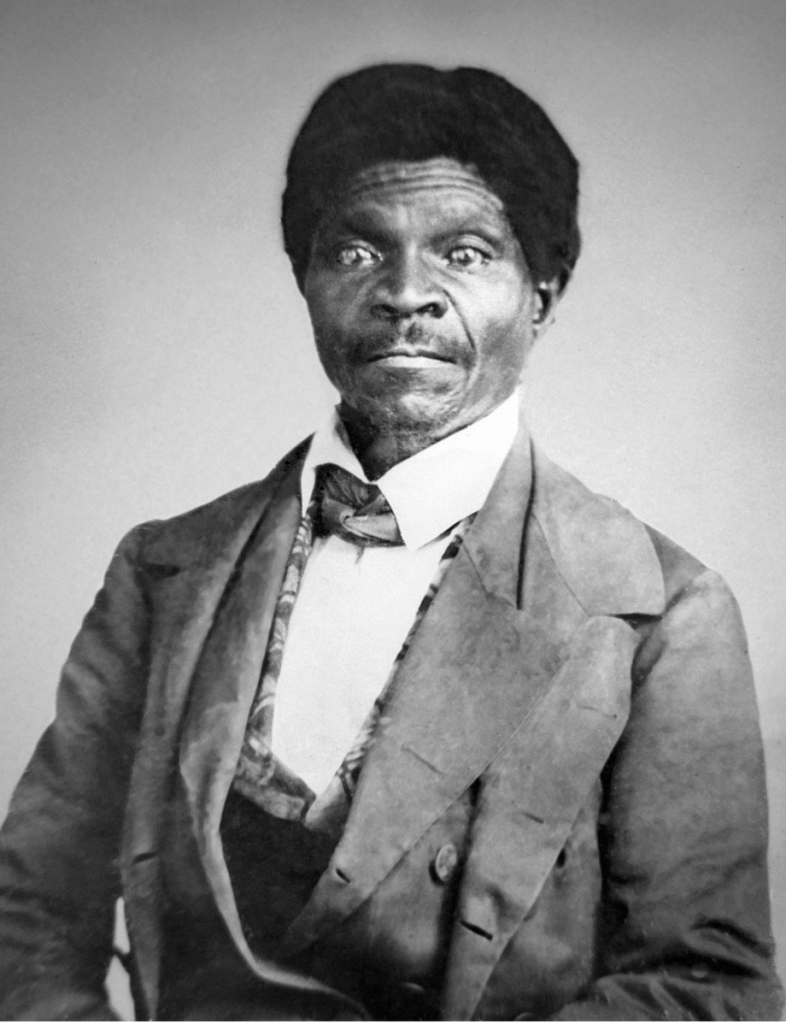[Slavery] is a blot on our national character, and every real lover of freedom, confidently hopes that it will be effectually, though it must be gradually, wiped away; and earnestly looks for the means, by which this necessary object may best be attained. –Quoted in Timothy S. Huebner article, JAH June 2010
- Who offered this comment on slavery as a “blot on our national character”?
Roger B. Taney (1777-1864)
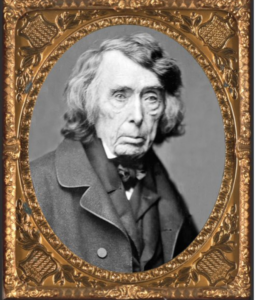 Roger Brooke Taney, a graduate of Dickinson College, might well be the most controversial Supreme Court justice in American history. Taney served as Chief Justice of the United States for nearly thirty years, from 1835 to 1864. But this was a period of bitter sectional controversy over slavery, and Taney’s pro-slavery decisions have since seriously tarnished his reputation. Originally from Maryland, Taney had been a slaveholder until he emancipated his own slaves in 1818. But the Border State judge considered himself a nationalist above all else, and angrily blamed abolitionists for ripping the country apart. So he thought he could save the union with the Dred Scott case of 1857, by rendering a sweeping pro-slavery verdict. The reaction, however, was the opposite of what Taney had expected. By 1860, his ruling against the Scott family had helped elect Abraham Lincoln, an anti-slavery Republican, as president. The aging chief justice then battled fiercely against the aggressive new commander in chief over war powers and other issues. Taney finally died at age 87, in the final months of a bloody Civil War that he had in several ways helped to ignite.
Roger Brooke Taney, a graduate of Dickinson College, might well be the most controversial Supreme Court justice in American history. Taney served as Chief Justice of the United States for nearly thirty years, from 1835 to 1864. But this was a period of bitter sectional controversy over slavery, and Taney’s pro-slavery decisions have since seriously tarnished his reputation. Originally from Maryland, Taney had been a slaveholder until he emancipated his own slaves in 1818. But the Border State judge considered himself a nationalist above all else, and angrily blamed abolitionists for ripping the country apart. So he thought he could save the union with the Dred Scott case of 1857, by rendering a sweeping pro-slavery verdict. The reaction, however, was the opposite of what Taney had expected. By 1860, his ruling against the Scott family had helped elect Abraham Lincoln, an anti-slavery Republican, as president. The aging chief justice then battled fiercely against the aggressive new commander in chief over war powers and other issues. Taney finally died at age 87, in the final months of a bloody Civil War that he had in several ways helped to ignite.
Video produced by Sarah Goldberg (Class of 2018)
Image Gateway –The Scott Family and Dickinson
Teaching the Dred (and Harriet) Scott Case
“Clearly, the political system was breaking down, unable to contain sectional rivalry and violence. Perhaps, thought Chief Justice Roger Taney, the Supreme Court could resolve once and for all the nation’s split over slavery. On March 6, 1857, in Dred Scott v. Sanford, a divided Supreme Court ruled on the case of a slave who argued that his residence in Illinois and the Wisconsin territory had freed him from bondage. The majority ruled that Scott remained a slave, that as a slave he was not a citizen and had ‘no rights which the white man was bound to respect,’ and that the Missouri Compromise ban on slavery was unconstitutional because it deprived citizens of their property without due process of law.” –Louis Masur, The Civil War, p. 7
“In the days after the 1856 presidential election, Buchanan made his plans for his time in office clear. He talked with Chief Justice Roger Taney on inauguration day about a court decision he hoped to see handled during his time in office. Indeed, not long after the inauguration, the Supreme Court handed down a decision that would come to define Buchanan’s presidency. The Dred Scott decision, Scott v. Sandford, ruled that Black Americans could not be citizens of the United States and therefore could be transported as chattel from any state to another regardless of state law.29 This gave the Buchanan administration and its southern allies a direct repudiation of the Missouri Compromise. The court ruled that Scott, a Missouri slave, had no right to sue in United States courts. The Dred Scott decision signaled that the federal government was now fully committed to extending slavery as far and as wide as it might want.” —American Yawp, Chap. 13, Sec. V
Featured Exhibit —Dred Scott Decision and Its Bitter Legacy (Google Arts)
